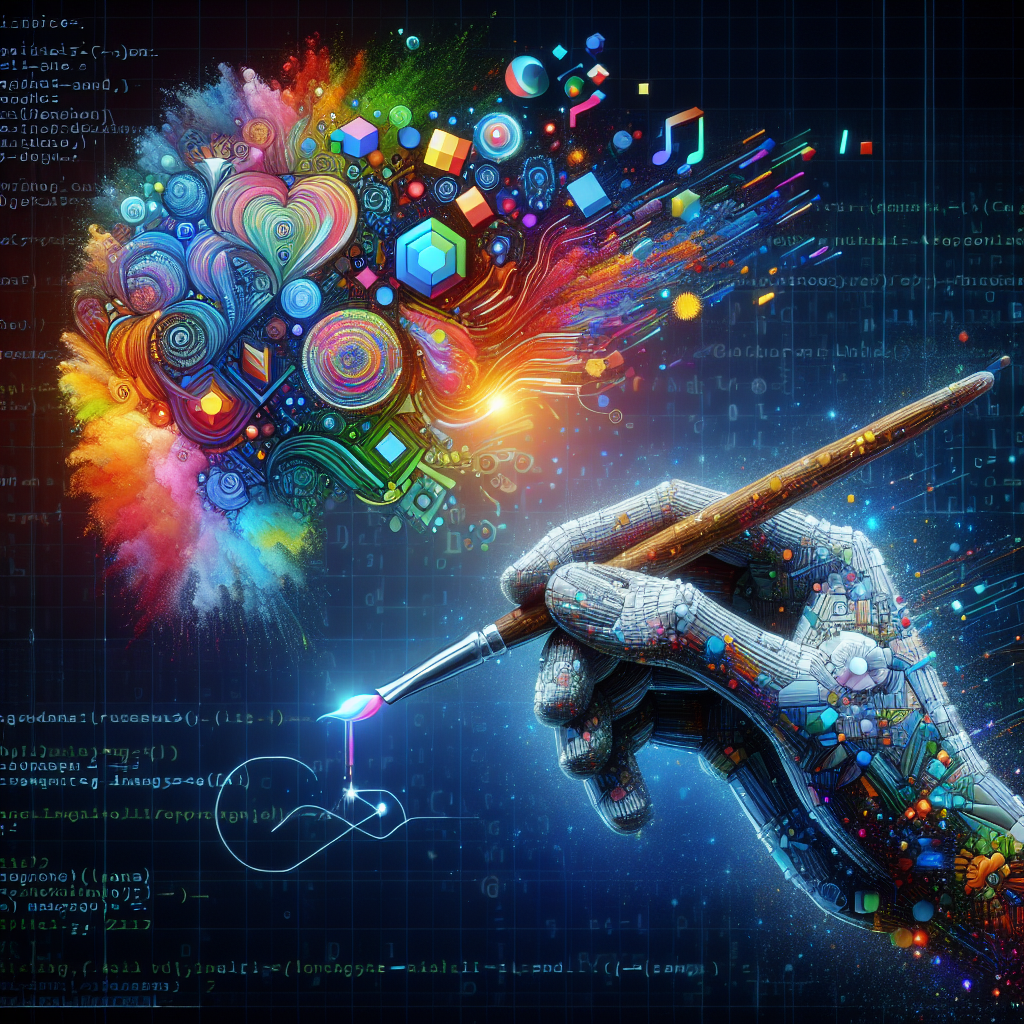In recent years, there has been a significant advancement in the field of artificial intelligence (AI), particularly in the area of generative AI. Generative AI refers to algorithms and models that can generate creative outputs, such as images, music, text, and even entire works of art. This technology has the potential to revolutionize the way we create and consume art, opening up new possibilities for artists and creators.
Generative AI works by using a type of neural network called a generative adversarial network (GAN). GANs consist of two neural networks – a generator and a discriminator – that work together to produce realistic and high-quality outputs. The generator creates new content based on input data, while the discriminator evaluates the content to determine if it is real or generated. Through this process of “learning” and feedback, the generator improves its ability to produce more convincing and creative outputs.
One of the most well-known applications of generative AI in the art world is the creation of deepfake videos, which use AI algorithms to manipulate and alter existing video footage to create realistic, but fake, videos. While deepfakes have raised concerns about their potential for misuse and deception, they also demonstrate the power of generative AI to create highly realistic and convincing content.
Beyond deepfakes, generative AI is being used in a variety of other creative applications, such as image generation, music composition, and text generation. For example, the popular website This Person Does Not Exist uses generative AI to create realistic images of non-existent people, while the AI music platform Amper allows users to generate custom music tracks for their projects.
Generative AI has the potential to democratize the creative process, allowing artists and creators to explore new ideas and express themselves in ways that were previously not possible. By using AI algorithms to generate content, artists can quickly iterate on their ideas, experiment with different styles and techniques, and push the boundaries of traditional art forms.
However, generative AI also raises questions about the role of the artist in the creative process. Some critics argue that using AI to generate art diminishes the role of the artist and devalues the human experience of creating. Others argue that AI can be a powerful tool for artists, helping them to explore new creative possibilities and push the boundaries of their work.
Despite these concerns, generative AI has already had a significant impact on the art world. Museums and galleries are increasingly showcasing AI-generated artworks, and artists are using AI algorithms to create innovative and thought-provoking pieces. For example, the artist Mario Klingemann has used generative AI to create a series of abstract artworks that explore the intersection of art and technology.
In the world of music, generative AI is also making waves. The AI music platform Jukedeck allows users to generate custom music tracks for their projects, while the AI composer Aiva is creating symphonies and concertos that are indistinguishable from those composed by human musicians. These developments are opening up new possibilities for musicians and composers, allowing them to experiment with new sounds and styles and reach new audiences.
Generative AI is also being used in the field of fashion, with companies like IBM and Tommy Hilfiger using AI algorithms to design custom clothing and accessories. By using AI to generate designs, fashion brands can create unique and personalized pieces that cater to individual tastes and preferences.
In the world of literature, generative AI is also making an impact. The AI writing platform OpenAI has developed a language model called GPT-3, which can generate human-like text based on a prompt. This technology has the potential to revolutionize the way we write and consume content, allowing writers to quickly generate ideas and explore new genres and styles.
Overall, generative AI is revolutionizing the way we create and consume art, opening up new possibilities for artists and creators across a variety of disciplines. While there are still questions and concerns about the role of AI in the creative process, it is clear that generative AI has the potential to transform the art world in exciting and innovative ways.
FAQs:
Q: Can generative AI replace human artists?
A: While generative AI has the potential to create realistic and convincing artworks, it is unlikely to replace human artists entirely. AI algorithms lack the human experience, emotion, and creativity that are essential to the art-making process. Instead, generative AI can be seen as a tool for artists to explore new ideas and techniques, rather than a replacement for human creativity.
Q: How can artists use generative AI in their work?
A: Artists can use generative AI in a variety of ways, such as generating new ideas and inspiration, experimenting with different styles and techniques, and pushing the boundaries of traditional art forms. By using AI algorithms to generate content, artists can quickly iterate on their ideas and explore new creative possibilities.
Q: Is generative AI ethical?
A: Generative AI raises ethical questions about the role of the artist in the creative process, as well as concerns about misuse and deception through technologies like deepfakes. It is important for creators and users of generative AI to consider the ethical implications of their work and ensure that they are using AI algorithms responsibly and ethically.
Q: How is generative AI changing the art world?
A: Generative AI is revolutionizing the art world by opening up new possibilities for artists and creators, allowing them to explore new ideas and express themselves in innovative ways. Museums and galleries are increasingly showcasing AI-generated artworks, and artists are using AI algorithms to create thought-provoking and cutting-edge pieces.
Q: What are some examples of generative AI in art?
A: Some examples of generative AI in art include the creation of deepfake videos, AI-generated images of non-existent people, custom music tracks generated by AI algorithms, and symphonies and concertos composed by AI composers. These examples demonstrate the diverse and innovative ways that generative AI is being used in the art world.

